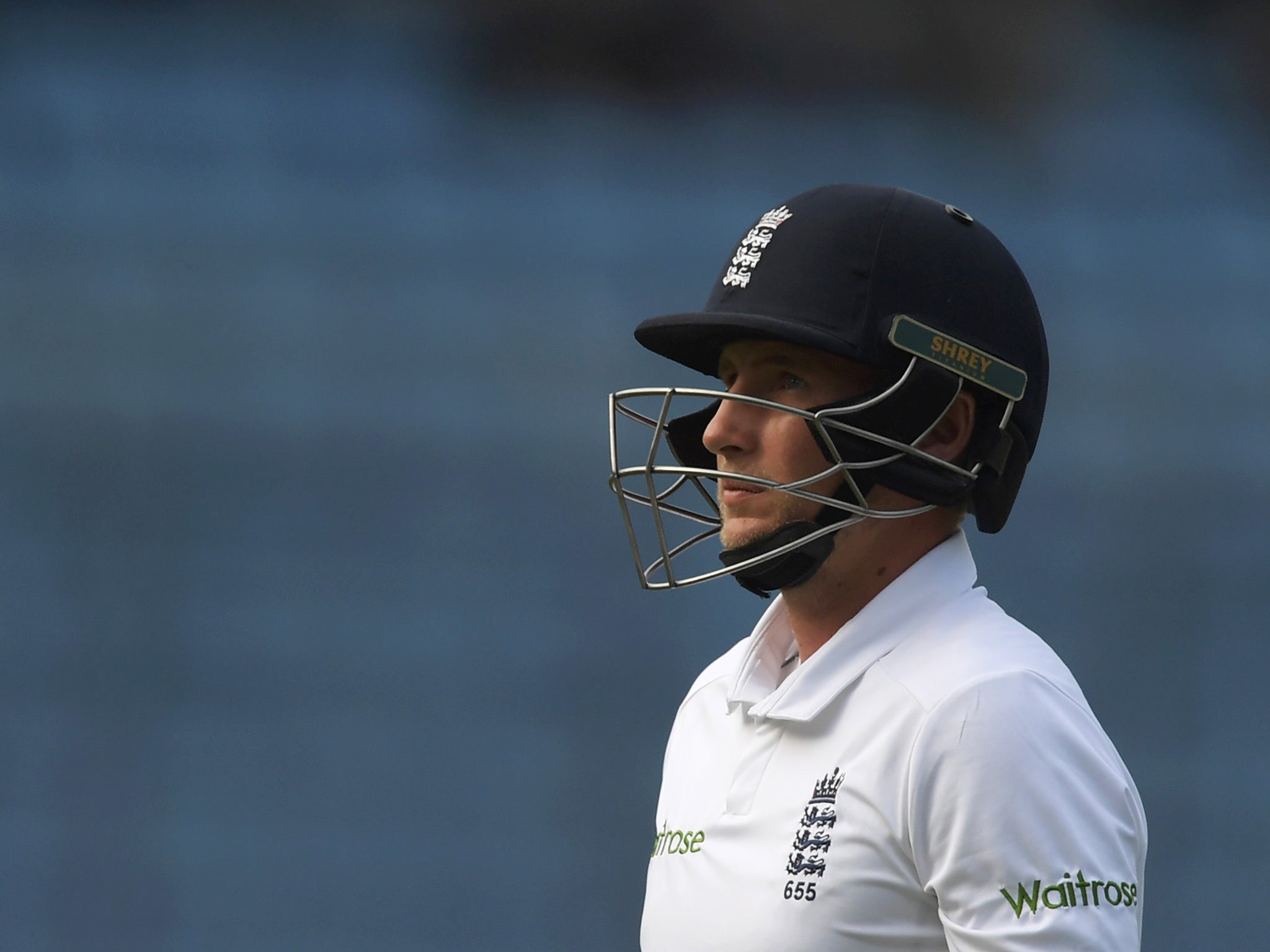Why the emergence of Keaton Jennings and Haseeb Hameed could work wonders for Joe Root
Outside Edge: The rise of two young and promising openers may allow England's best batsman to come in where he is likely to score most runs

Notable though it is that England have never lost on the sub-continent after making 400 or more in the first innings, after day two of the fourth Test it was hard not to feel that the record may soon be broken. The truth is, India’s batsmen looked under little pressure on a gradually-wearing pitch and if England can’t induce a clatter of wickets quickly, Ashwin and Jadeja might run amok on day four.
Still, Keaton Jennings’ century has been a major plus for England in this match, and it is typical that after so much searching for the perfect opening partner for Alistair Cook, England’s selectors now appear to have found two in one series. With Haseeb Hameed watching on, the question as to which of these young men will walk out with Cook next summer will be much pondered.
Tough though it is for Ben Duckett, whose omission from the Test side is more understandable than his dropping from the ODI squad, there must be a strong possibility of both Hameed and Jennings making England’s starting XI in the future. This solution would bolster the top order and allow Joe Root to revert to number four.
I’ve argued before that Root’s promotion to the number three slot was misguided, and based on the dogmatic notion that this is the position which should be reserved for the team’s best batsman. Yet that has rarely worked, especially for England. The better approach is to put your best batsman in the spot he is likely to score most runs. Root averages 43.87 in 15 matches coming in at first drop, compared to just over 50 when batting at four. As it happens, he averages well over 70 coming in at number five, but in any event he appears to bat with more freedom in the middle order. Come the first Test against South Africa in July, Hameed should open with Cook, followed by Jennings, then Root.
No free-to-air leaves the game impoverished
A six o’clock alarm followed by the desperate whining of hungry cats is not the most fun way to start the day. But accompanied by the BBC’s Test Match Special, even the most obstreperous meow is bearable. On Friday morning – lunchtime in India – an interview with Hameed was enough to warm any cricket-loving heart. To hear a young man talk so engagingly and maturely about the sport is rare enough; for him to do so while sidelined by the desperate finger injury which befell him in Mohali is all the more admirable.
It raised the thought, however, that for youngsters who might one day follow in his footsteps, hearing him speak on the radio is unlikely to compare to watching him live on TV. It is seeing sportsmen and women in their pomp, and watching events unfold as they happen, which truly inspires players of the future. And as things stand, only those who pay for Sky or BT subscriptions will have such an opportunity.
The financial arguments in favour of awarding TV rights to the big-money firms have been well-rehearsed. But it is utterly facile to maintain that the lack of free-to-air live cricket is not having an impact on take up among children. Any cricket fan who grew up before Sky began its near monopoly of the sport will remember whole Saturdays in front of the box – and, even more excitingly, the rush home from school to watch the last session on a weekday. And at six o’clock, after two hours of watching our heroes, we would head outside for a game in the park or the garden.
Forget the rejigging of England’s domestic T20 competition; it’s the return of some live cricket to free TV that will rejuvenate this country’s love affair with the greatest of all sports.
Whether England use two twirlies or three, none compare to Aswin
With the personnel available on the tour, England were probably right to go into this test match with just two specialist spinners. Gareth Batty is a stalwart of the game but didn’t look up to scratch in the last match. Meanwhile, Liam Dawson’s call-up from the Lions squad seems mystifying. He is clearly not the next best spinner available for red-ball cricket – Jack Leach and Olly Rayner both have far superior first-class records – and it almost feels as if England had decided from the outset to go into this game with four seamers and chose Dawson on the basis that he’s a good bloke to have around the squad.
England’s various spinners have had their fair share of criticism this winter. But in Ravi Ashwin India have a tweak-merchant at the top of his game. Whoever filled the English spinning berths was always likely to pale by comparison.
Join our commenting forum
Join thought-provoking conversations, follow other Independent readers and see their replies
Comments